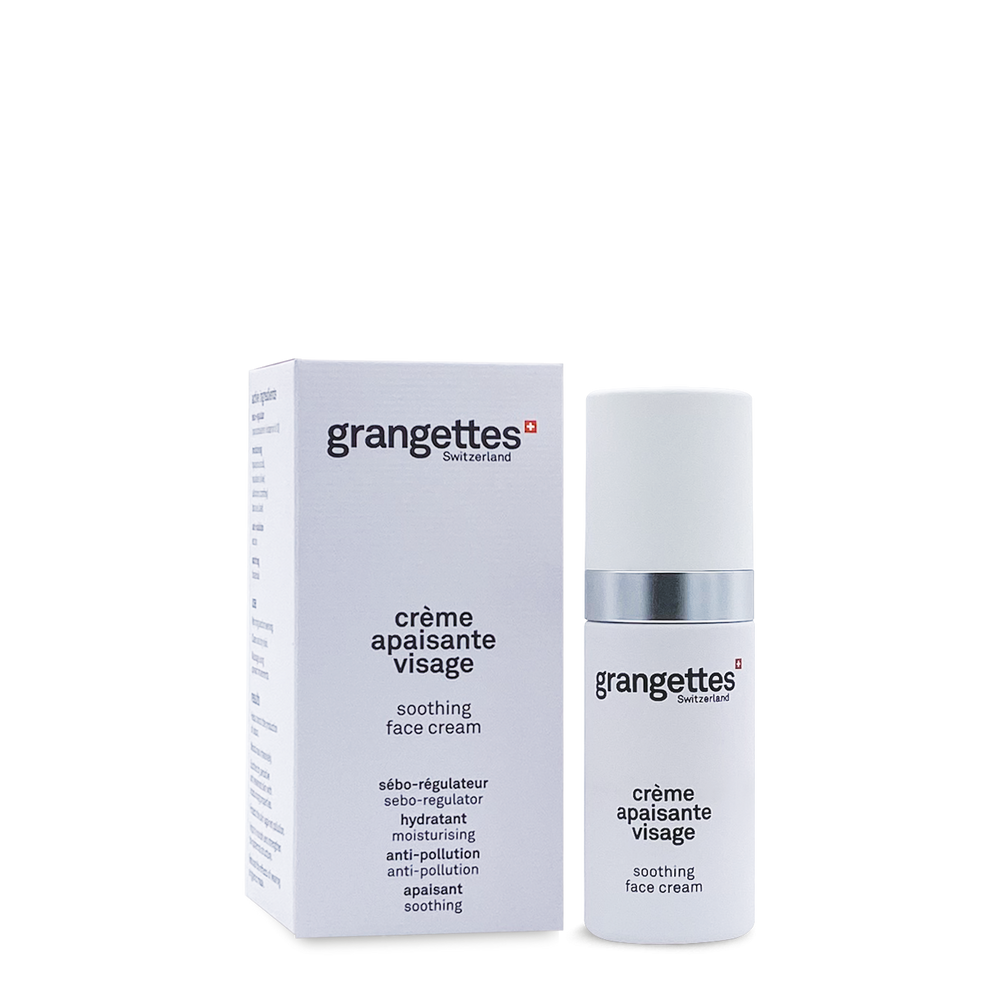What is sebum?
sebum is composed of lipid elements, such as triglycerides, cholesterol or fatty acids. It is an oily fluid secreted by the sebaceous glands and released to the surface of the skin via the pores. The sebaceous glands are located in the dermis, which is the middle layer of the skin. They are almost always attached to a hair follicle: we call this association the pilosebaceous unit.
In humans, the number of these sebaceous glands remains constant throughout life. However, their size can increase with age, especially during adolescence. sebum is then produced in greater quantities, which is the main cause of acne.
The sebaceous glands are present all over the body, except on the soles of the feet and the palms of the hands. They are found in large quantities on certain areas of the body and face, which therefore produce more sebum:
- The T zone of the face, back and shoulders : this explains why pimples or blackheads , as well as shiny areas (shiny complexion) appear on these parts of the face and body. This problem mainly concerns oily skin , but also combination skin;
- The scalp: sebum also makes hair greasy quickly after shampooing since it evacuates along the hairs. It is therefore found significantly in the hair. It attaches along the hair to protect it from dryness.

What is the purpose of sebum?
Sebum makes up the skin's hydrolipidic film: it serves to maintain good hydration and to protect the skin from external aggressions, such as the cold or the sun. Furthermore, it softens and softens the epidermis and balances skin bacteria.
Its role is also to lubricate the hairs, especially hair, which gives them shine. It also provides antioxidants to the epidermis, and defends the body against external aggressions and pathogens. Indeed, its slightly acidic pH allows it to kill bacteria or microbes before they penetrate the epidermis and spread throughout the body.
If an overproduction of sebum can create imbalances in the skin and lead to imperfections, insufficient production is accompanied by tightness and skin discomfort. It’s all a question of balance!
What are the causes of hyperseborrhea?
Several factors can be the cause of too much sebum production:- Hormones: during puberty, during pregnancy, but also before menstruation, hormonal changes can cause an excess of sebum;
- everyday aggressions: tobacco, heat, pollution, or even the use of certain cosmetic products with the wrong composition can lead to hyperseborrhea;
- fatigue and stress can stimulate sebum production;
- A poor diet, in particular the consumption of foods that are too fatty such as cold meats, can have consequences on the skin.
Moisturize the skin without clogging it
All skin, even those that are oily and produce excess sebum, need to be hydrated. To avoid fueling your hyperseborrhea, use cosmetics that do not clog your skin.
If your skin tends to shine in the middle of the day, make sure not to dry it out, but to moisturize it with healthy cosmetics. To do this, the composition of your beauty products must be 100% clean ! It is essential to avoid harmful ingredients such as phenoxyethanol, parabens, silicones, PEGs, irritants, allergens, comedogenic ingredients, petroleum derivatives, endocrine disruptors, pollutants...

Be careful with the choice of makeup
To combat excess sebum, avoid suffocating and greasing the skin with thick, oily foundations that clog pores.
Opt for a natural foundation, preferably powder, which evens out and reduces imperfections, while letting your skin breathe!
Change your diet to fight excess sebum
Changing your diet can help you fight excess sebum. Choose healthy foods, neither too fatty nor too sweet, and be sure to hydrate well. Your diet should be rich in nutrients, vitamins and antioxidants. The effects on your complexion will not fail to be noticed: your skin will be brighter , it will remain well hydrated and will be less marked.
zinc is a trace element that allows you to reduce sebum secretion and limit inflammation. You can find it in many foods, including seafood, cereals, pumpkin seeds, soy, sesame seeds...
omega 3 are also great allies against sebum. They are present in fatty fish, nuts, flax seeds and even avocado and help reduce inflammation and overproduction of sebum. Consider including them about twice a week in one of your meals!
Green tea , thanks to its high tannic acid content, helps reduce skin inflammation but also drains toxins from the body. For purified skin, this drink is ideal!

Cleanse your skin morning and night
Every day, morning and evening, cleanse your skin with a natural product. Grangettes purifying face gel rids your skin of impurities, thanks to its gentle exfoliating action.
Ingredients derived from coconut, such as disodium cocoyl glutamate and disodium cocoamphodiacetate, work to eliminate impurities and excess sebum, leaving skin clean and glowing.
- Regular price
- CHF 36.00
- Regular price
- Sale price
- CHF 36.00
- Unit price
- per
Superficial peels
superficial peels based on salicylic acid are effective against excess sebum, acne and enlarged pores. This technique uses fruit acids to desquamate the epidermis and restart the process of cellular renewal. The peel also stimulates the production of hyaluronic acid.
Use a suitable day cream
Opt for a day cream that helps regulate sebum . Grangettes soothing face cream is enriched with cyanocobalamin (vitamin B12), an ingredient that balances sebum production.
- Regular price
- CHF 35.00
- Regular price
- Sale price
- CHF 35.00
- Unit price
- per






